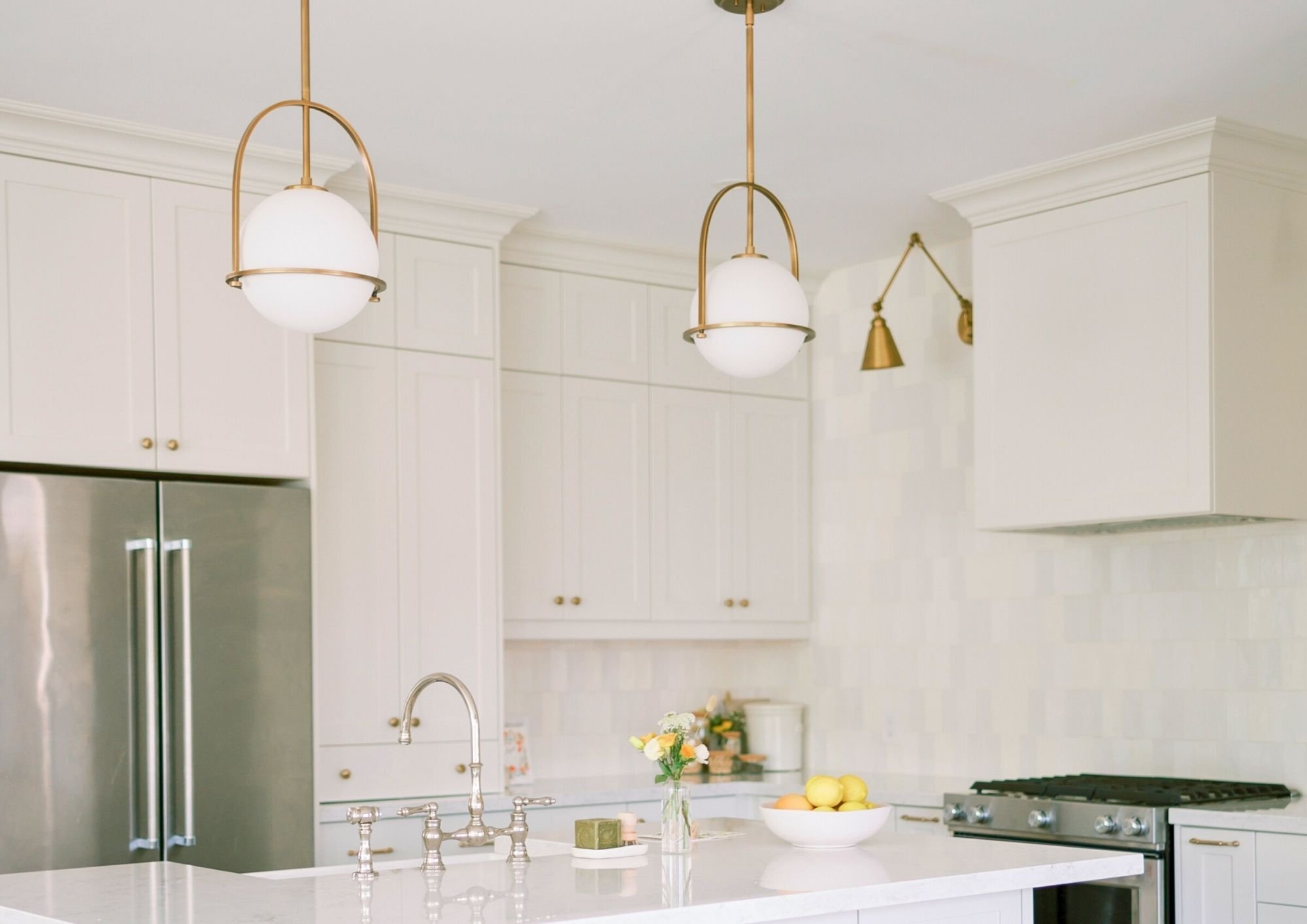MAKING YOUR HOME SHINE WITH THE RIGHT LIGHTING
HOW TO PROPERLY ILLUMINATE YOUR HOME FOR BOTH FUNCTION AND AMBIANCE
Lighting has this almost magical way of transforming how our homes look, feel, and function.
And it’s not just about brightening a room.
The right lighting elevates your experience in every space, highlights your home’s best features, and enhances the depth of colors and textures.
More than that, it affects you—your energy, mood, ability to focus, and how calm you feel at the end of the day.
And if your setup isn’t quite right? You’ll feel it instantly.
Maybe it’s:
A living room that never quite achieves that cozy, welcoming ambiance.
The kitchen feeling more like a sterile lab than the heart of your home.
Harsh or dim overhead lighting in your home office that leaves you with tired, strained eyes (and a headache by 3 PM).
But, between finding the right balance of brightness and warmth, matching function with style, and the endless options to choose from... how do you get it just right?
Let me share a little designer secret: The answer is all about layering!
Let’s take a closer look:
The Art of Layering Lighting
If you take away just one thing from this post, let it be this:
Great lighting is all about thoughtful layering.
Instead of relying on a single overhead light (which, if we’re being honest, never does the job), layering means mixing different types of lighting, with varying intensities, at different heights and areas throughout a room.
And let’s not forget details like light distribution and color temperature—two little things that instantly shift the mood of a space.
Because when all these elements come together?
That’s when your home truly shines, both figuratively and literally!
Now, let’s break it down room by room:
Lighting in Different Spaces
Every room has its own unique needs, and the lighting should always reflect that. With the right approach, you’ll enhance how your spaces look, feel, and function—bringing out their best qualities throughout the day.
Here are some key considerations for different areas of your home:
Living Room
This space does it all, from hosting, lounging and reading to long movie nights, so versatility is key! This is achieved by:
Intentionally mixing different types of fixtures—think pendants, recessed lighting, floor lamps, and table lamps.
Using dimmers to shift the ambiance throughout the day.
Incorporating accent lighting to highlight shelves, artwork, and architectural details to bring that polished, designer touch.
Kitchen
A space that needs to balance task lighting with warmth and ambiance by:
Installing under-cabinet lights or wall-mounted fixtures to ensure countertops remain well-lit and shadow-free.
Positioning beautiful pendants over islands and/or dining areas to add both focused illumination and style.
Incorporating recessed lights or ceiling fixtures for proper general lighting while avoiding an overly bright and clinical feel.
Bedroom
This is where lighting should create an extra soothing and restful vibe by:
Combining soft, warm ambient light with bedside lamps for reading.
Avoiding harsh overhead lights directly above the bed.
Ensuring functional lighting for morning routines without sacrificing the cozy feel.
Bathroom
Both practicality and creating a relaxing atmosphere are key in bathrooms. This is achieved by:
Using vanity lighting intentionally to ensure even illumination without unflattering shadows or glare.
Illuminating shower and tub areas to enhance both function and mood.
Incorporating low-intensity options or dimmers for those late-night visits.
Ensuring all fixtures are rated for bathroom use and properly installed for safety.
Home Office
A well-lit workspace prioritizes focus and productivity without sacrificing comfort by:
Positioning the desk to maximize natural light while minimizing screen glare.
Incorporating varying or adjustable task lighting to adapt to changing needs throughout the day.
Adding soft ambient lighting to reduce shadows and eye strain.
In the kitchen, wall lights, under-cabinet lighting, and pendants work together to provide essential task lighting for cooking.
The Future of Lighting Design
Lighting design is evolving quickly, and let me tell you, there are some truly exciting innovations happening.
So, before we wrap things up, let’s take a quick look at what’s next:
Smart Lighting That Adapts To You
Think motion sensors, timers, and even smart controls that learn your routines and adjust accordingly. And let’s not forget the new bulbs that mimic the temperature and intensity of daylight to support your circadian rhythm and well-being
Statement Fixtures
Lighting is no longer just functional—it’s an art form. Sculptural, eye-catching fixtures are becoming a staple in our homes, adding personality and a little extra something to every room.
Sustainable Options Without The Compromise
Eco-friendly and energy-efficient lighting is becoming more refined. Expect beautifully crafted sustainable fixtures, and warm, high-quality LED bulbs that don’t sacrifice ambiance.
In other words, the future is looking bright (sorry, couldn’t resist 😉)
And don’t forget:
When the lighting in your home is thoughtfully layered, it does more than brighten your spaces—it transforms how you experience and feel in your home every day!


